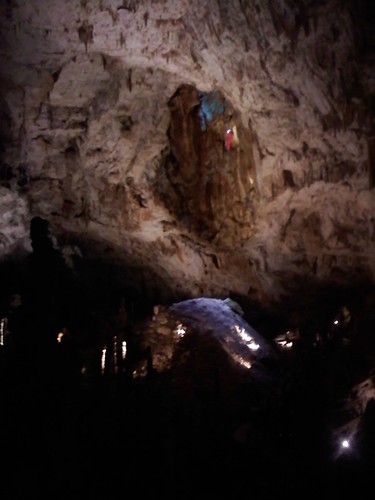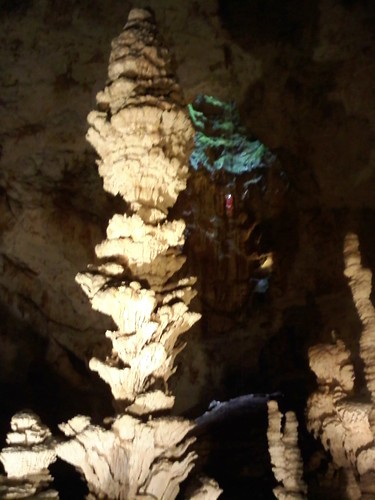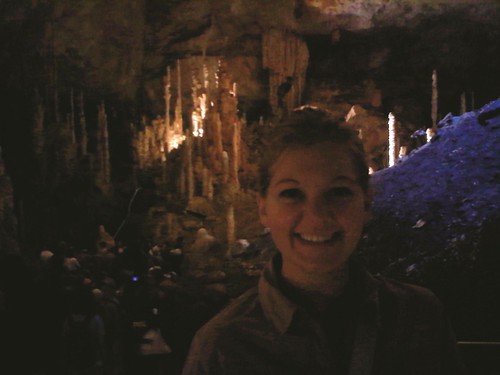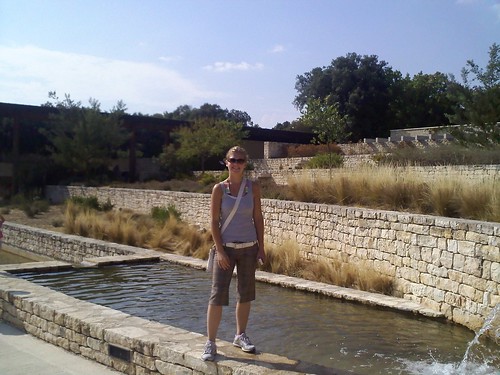 What they discovered was a spectacular cavern about 2.5 acres in area. Directly below their point of entry, they found a huge pile of debris, including animal bones dating back to the last ice age. Upon lighting the room, they observed thousands of concretions (stalactites and stalagmites). Some had grown up to 15m (approximately 50 ft) tall. In some areas of the cave, the stalactites and stalagmites were even found to grow until they connected in one continuous column.
What they discovered was a spectacular cavern about 2.5 acres in area. Directly below their point of entry, they found a huge pile of debris, including animal bones dating back to the last ice age. Upon lighting the room, they observed thousands of concretions (stalactites and stalagmites). Some had grown up to 15m (approximately 50 ft) tall. In some areas of the cave, the stalactites and stalagmites were even found to grow until they connected in one continuous column. This first massive room is just one of many in the vertically descending cave network. Because visitors must descend through the cave, in French it's called an Aven as opposed to a Grotte. Modern geologists suspect that the cave extends all the way from the Cèze river valley to the Ardéche river gorge to the north. In prehistoric times, the aven would have provided an underground waterway linking the two rivers. After the water levels of the two adjacent rivers subsided the cave would have dried out and the concretions began forming.
This first massive room is just one of many in the vertically descending cave network. Because visitors must descend through the cave, in French it's called an Aven as opposed to a Grotte. Modern geologists suspect that the cave extends all the way from the Cèze river valley to the Ardéche river gorge to the north. In prehistoric times, the aven would have provided an underground waterway linking the two rivers. After the water levels of the two adjacent rivers subsided the cave would have dried out and the concretions began forming.
Perhaps the most interesting story of the cave, however, is it's fight against human interference. Archaeologists have found no signs of human habitation of the cave. Robert de Joly was at least the first man to enter and then return alive. Fortunately for future generations, he was committed to the preservation and took immediate action with the local city council to prevent unsupervised visits and desecration of the cave. Despite these efforts, the cave was nearly ruined by an overwhelming influx of visitors.
Installation of an asphalt parking lot over the caverns prevented water seepage into the ground; the formation of concretions was stalled. Likewise, the air exhausted by visitors climbing back up the 700 steps to exit after visiting the third room, changed the cave's climate enough to encourage the growth of mass and algae on the walls. In the winter, when visitations declined, the organic matter would die, leaving an ugly black film. Attempts to power wash the cave walls caused further damage and permanently stopped the formation of stalactites and stalagmites in some locations.
Fortunately, scientists realized some solutions to reverse these negative trends. The parking lot was torn out and turned into a terraced garden. And elevators were installed at the base of the third room to whisk visitors up to the surface. L'aven d'Orgnac has now regained much of its former luster. It is truly worth of being called a grad site de France.

![Reblog this post [with Zemanta]](http://img.zemanta.com/reblog_e.png?x-id=3acdc8a7-2d8f-4000-8d82-34ff559aa861)

No comments:
Post a Comment